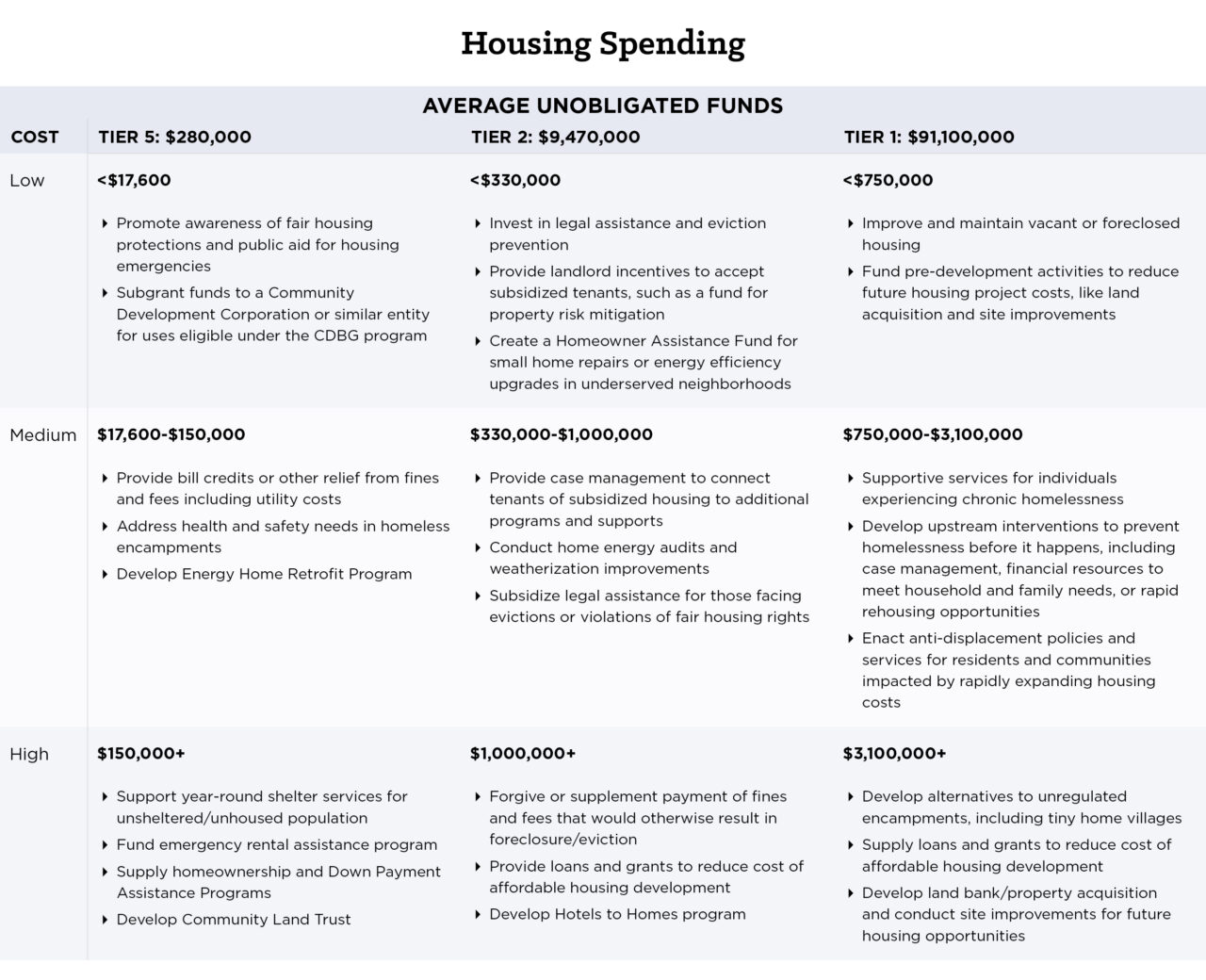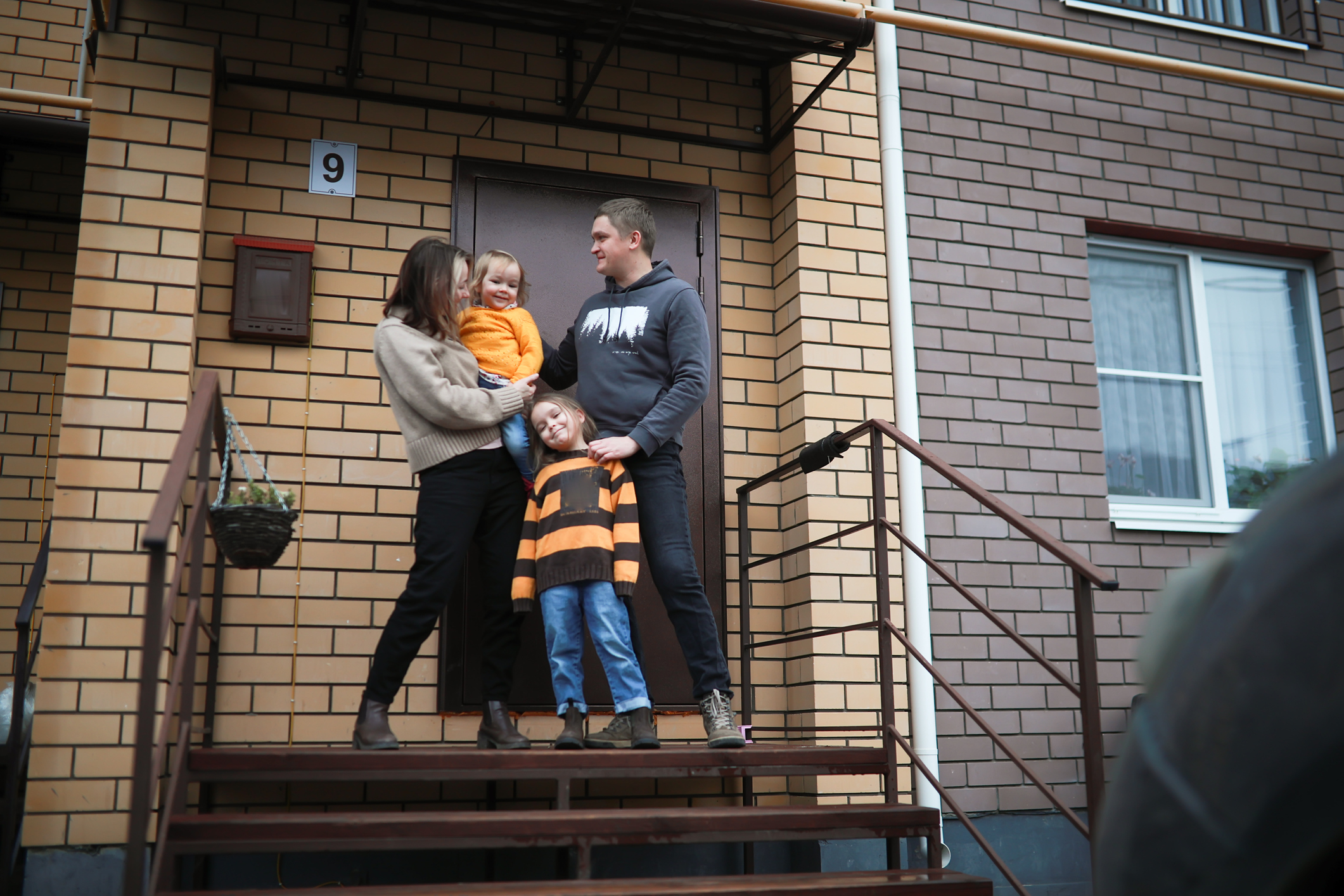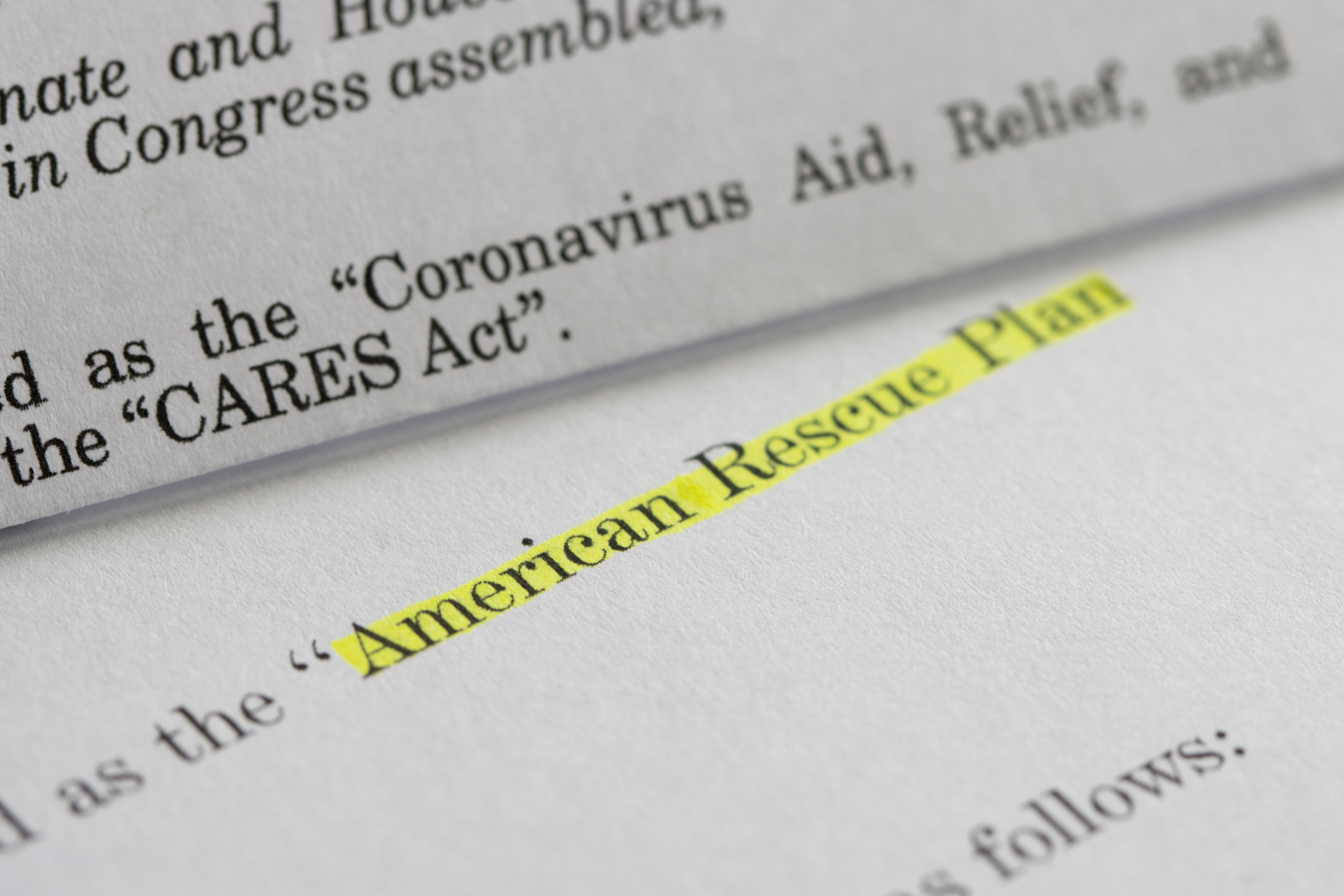The American Rescue Plan Act’s (ARPA’s) $65 billion in direct federal grants to all of America’s 19,000-plus cities, towns, and villages provided both necessary budget relief and made local governments a principal part of the nation’s solution to reversing pandemic-related declines in housing stability. A report from the US Consumer Financial Protection Bureau found that as of December 2020, 11 million households were significantly overdue on their regular housing payments. The report also found Black and Hispanic households were more than twice as likely to report being behind on their payments than white households, and households with incomes below $75,000 were more than twice as likely to be behind than households with incomes above $75,000. Pandemic-related declines fueled housing hardships and were exacerbating housing disparities by race and income.
Two new programs enacted under ARPA, Emergency Rental Assistance (ERA) and the State and Local Fiscal Recovery Fund (SLFRF), provided local governments a unique, one-time opportunity to assess and respond to residents’ immediate housing needs, while addressing long-standing deficits of affordable housing supply that predate the pandemic. As of the most recent reporting from the Treasury, ERA grantees have made over $10.3 million ERA payments to households at risk of eviction and SLFRF grantees have budgeted approximately $18.5 billion for over 2,900 housing projects in 925 states and localities. Moreover, ERA has enabled approximately 180 jurisdictions across 36 states to launch or grow local eviction diversion programs.
Prior to the availability of ARPA, the US Department of Housing and Urban Development’s (HUD’s) HOME Program – with annual funding of about $1.5 billion – was the only federal grant directly available to local governments for the exclusive purpose of making affordable housing available to low-income households. In comparison, current SLFRF obligations and expenditures for housing projects are equal to about 12 years of HOME program funding, potentially improving housing availability and attainability for low-income residents that would otherwise take local government HOME grantees more than a decade to match with annual grants.
Given the broad flexibility of ARPA programs for local governments, and despite the relative complexity of expenditures for affordable housing compared to many other spending categories, the data shows local governments will take action to meet their immediate and long-term housing needs when additional resources are available. As of September 2023, Tier 1 cities and consolidated cities have obligated the majority of their housing funds towards:
- 33% to Affordable Housing Construction and Preservation
- 31% to Rental Assistance
- 25% to Homelessness Response and Services
This blog highlights spending ideas for getting the most out of any remaining, unobligated SLFRF allocations to improve housing opportunities before the 2024 obligations deadline; however, be sure to review Treasury’s Final Rule for compliance and reporting guidance.
Spending Opportunities
The following Spending Category Matrix presents multiple examples for different categories of spending (low, medium, and high cost) that can be utilized by governments of various tiers in obligating their remaining funds. The Housing spending category was developed in partnership with NLC, Brookings Metro, and the National Association of Counties for the Local Government ARPA Investment Tracker. This resource is another means for local leaders to find thousands of project ideas across tiers.

In 2022, Treasury explicitly permitted grantees to make long-term loans to help finance qualifying affordable housing projects even if project delivery extends beyond fiscal year 2026, when the SLFRF program expires.
Local Spotlights
Housing Supply and Homeownership
- Baltimore, MD allocated $9.7 million to support “middle neighborhoods” and assist with down-payment and closing costs for city employees. A $30 million mix or ARPA SLFRF and ARP-HOME funds will also be available to subsidize affordable housing development and pre-development activities.
- York, PA allocated $161,503 to Hanover Habitat for Humanity to Low-Income Homeownership Opportunities. The Habitat for Humanity Chestnut Street Housing Project will deliver new rowhomes for qualified families on a site where a fire destroyed 16 homes in 2009.
- Worcester, MA launched an Affordable Housing Preservation Program (AHP) allocating $1 million for the effort. The AHP program will provide grants to owners of “naturally occurring” affordable units to preserve the affordable rent levels into the future.
Healthy and Sustainable Housing
- Ashland, VA provided $150,000 to a local non-governmental partner to provide needed home repairs in underserved areas.
- The City of Bremerton, WA allocated $50,000 for homeowners to replace windows, hot water heaters, or furnaces. Funds are managed by their Community Development Block Grant (CBDG) administrator alongside existing CDBG funds.
Looking Ahead
The challenges presented by housing instability and homelessness within cities and towns were complex and costly to communities well before the pandemic. Economic decline related to COVID-19 and initial uncertainty over whether the federal response would include aid to local governments compounded existing housing challenges in municipalities, especially as it related to local capacity. Without government intervention, catastrophic rates of eviction and homelessness stemming from the pre-existing housing crisis appeared to policy experts and housing professionals as all but inevitable.
For our nation’s cities, towns and villages, ARPA is landmark legislation because it not only provided direct relief to households and small businesses harmed by the pandemic, but it also provided direct funding to all local governments to maintain necessary operations and services throughout the uncertainty of the pandemic and made cities and towns essential in response and recovery. Though significant housing needs remain in nearly every jurisdiction, local governments that prioritize housing investments are funding projects now that stand to deliver positive returns for community and economic development and housing opportunity for years to come.
Glossary
American Rescue Plan Act (ARPA) is the $1.9 trillion economic stimulus and pandemic recovery legislation signed into law by President Joe Biden on March 11, 2021. This blog and its series focus on the Coronavirus State and Local Fiscal Recovery Funds (SLFRF) program; therefore, authors may use “ARPA” and “SLFRF” interchangeably.
Coronavirus State and Local Fiscal Recovery Funds (SLFRF) is the $350 billion program authorized by ARPA that provides economic stimulus and pandemic recovery funding to U.S. states, territories, cities, counties, and tribal governments.
Allocations are the total funds distributed to state and local governments through SLFRF.
Adopted Budget are dollars distributed to local governments through SLFRF that have been budgeted or committed to specific initiatives or programs.
Spent means the grantee has issued checks, disbursed cash, or made electronic transfers to liquidate (or settle) an obligation.
Obligations are dollars distributed to state and local governments through SLFRF that have been legally dedicated to specific uses, frequently (but not exclusively) through contractual agreements. The Treasury’s recent guidance defines obligations as “orders placed for property and services and entry into contracts, subawards, and similar transactions that require payment.” The Final Rule requires recipient local governments to obligate 100 percent of their SLFRF allocations by December 2024.
Tier 1 local governments are metropolitan cities and counties with populations greater than 250,000. These jurisdictions include states, U.S. territories, and counties but NLC’s focus for this series is on cities. These governments are required to report quarterly, and the last reporting date captured in our data is from September 30, 2023.
Tier 2 local governments are metropolitan cities with a population below 250,000 residents that are allocated more than $10 million in SLFRF funding, and NEUs that are allocated more than $10 million in SLFRF funding. These jurisdictions include counties but NLC’s focus for this series is on cities. These governments are required to report quarterly, and the last reporting date captured in our data is from September 30, 2023.
Tier 5 local governments are metropolitan cities with a population below 250,000 residents that are allocated less than $10 million in SLFRF funding, and NEUs that are allocated less than $10 million in SLFRF funding. These jurisdictions include counties but NLC’s focus for this series is on cities. These governments are required to report yearly, and the last reporting date captured in our data is from April 31, 2023.
Non-entitlement units (NEUs) are local governments that typically serve 50,000 residents or less. Of the $65.1 billion allocated to municipal governments across the country, SLFRF allocated $19.5 billion, or 30 percent, to NEUs. Comparatively, SLFRF allocated $45.6 billion, or 70 percent, to metropolitan cities. Depending on if an NEU is a Tier 2 or Tier 5 recipient, they may have different reporting requirements.
Acknowledgements: Thank you to Christy Baker-Smith, Julia Bauer, Irma Esparza Diggs, Josh Franzel, Patrick Rochford, Archana Sridhar, and Melissa Williams for their support and review of this blog.













